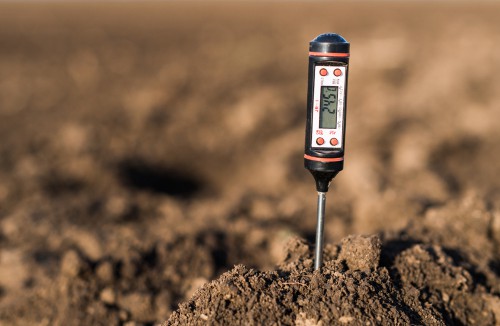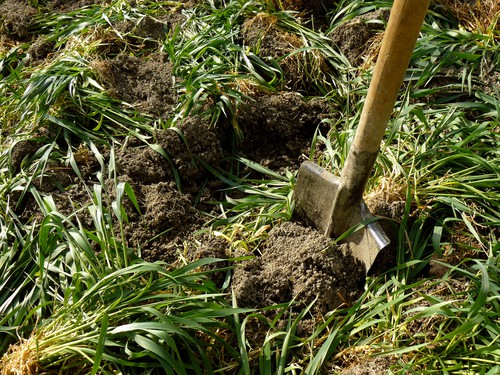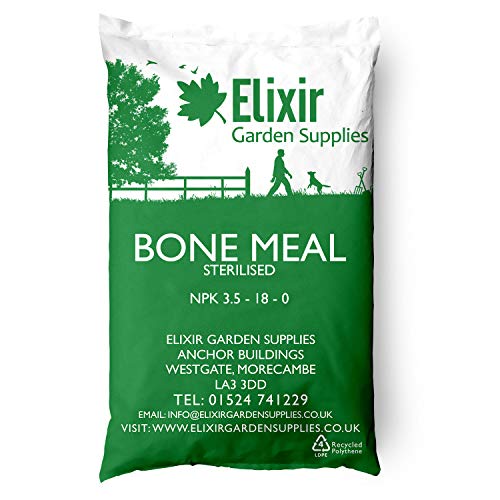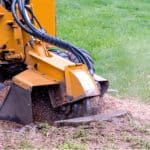Last updated on March 27th, 2022
Our site is reader supported, this means we may earn a small commission from Amazon and other affiliates when you buy through links on our site.
There are many ways that soil can change, and not always for the best. Thankfully there are ways that you can improve your garden soil to ensure it has all the nutrients needed for growing plants such as shrubs, perennials, trees and even vegetables and fruit bushes.
Test the soil to determine what nutrients are missing and the pH
It’s much easier to change the composition and nutrient profile than it is to change the pH level. PH changes are temporary and the soil will go back to its natural state unless you take measures to change the composition and nutrient profile concurrently. Rest assured all this really takes is the addition of some key products mixed in annually.

It’s important that you get home test kits. They don’t cost much and you can use them to test the quality of your soil. This comes in handy for two main reasons. First, you can test which nutrients are missing from your soil and then make amendments. Secondly, you can test the pH level and make amendments or choose plants that prefer the soil pH you have.
This will go a long way towards helping you improve the overall quality of your soil and helping you determine what to plant. There are certain plants that thrive in acidic soil, for example, Hydrangeas and Pieris, but if you have highly alkaline soil you might need to make some amendments before you go planting. Alternatively, you might need to find a different plant altogether.
Add plenty of organic matter or farm manure to the soil
Add plenty of well-rotted compost from your compost bin or leaf mould to help improve the nutrients in your soil. This can be done in autumn or spring before planting.
Improve drainage if it often gets waterlogged
If the soil is sometimes waterlogged or is made up of mostly clay, consider mixing in plenty of horticultural grit and organic matter to help improve the soil structure and drainage.
Go organic
The best thing you can do to improve your garden soil is to feed it an organic diet, by literally putting chopped-up organic materials directly into the top 6cm of soil. Mixing this in from autumn through winter will prepare the soil for spring. You can’t see it but spring is when billions of organisms start to wake up and start working underground.
Soil is living and the more that lives in it, the better it will be. This living soil uses recycled nutrients and water, all to improve soil health and fight off pests and diseases. Your soil needs the same things you do including food, water, and air.
Organic material like kitchen scraps, garden debris, fallen leaves, or something you buy from the store can be mixed in directly with things like manure, potassium and mineral phosphorus fertiliser, and lime. Adding all of this together in the autumn gives your soil time to break it down and prepare for producing the best shrubs, grasses, fruits and vegetables in spring.
Add nitrogen
And don’t forget the nitrogen. Nitrogen is one of the most important nutrients. It is typically in short supply after years of gardening and it feeds the organisms in your soil and your plants at the same time. Long-term soil health is really contingent upon nitrogen so you can add things like fish blood and bone, bone meal, organic fertilisers, grass clippings, and manure to help add nitrogen.
Encourage worms into your soil and even consider buying worms
Worms are very important and one technique you can use to improve your soil is called sheet mulching. This is where you build compost right on top of the surface of your soil, but not before you add a layer of compost underneath to kill the vegetation.
Why do this? Because it invites worms to live under the soil and transport food, and in doing so they dramatically improve the structure of your soil while depositing worm castings that are so important. If you don’t feel like doing this you can always buy worm castings or even the worms themselves and mix them in with your soil when you are preparing for planting in spring.

Plant green manure
If you have the space, using green manure and covering crops like buckwheat or clovers in the autumn will dramatically improve your soil. You can grow cover crops and add some organic matter to help improve the nutrients in the soil. More importantly, these cover crops serve as the shelter your soil so desperately needs from heavy rain. Cover crops to control the weeds in the autumn and winter, a time when most gardeners pay no attention to the weeds that are growing and then have to battle with them every spring. It also prevents bad winter weather and wind from blowing your topsoil away or the rain from washing away the vital nutrients you work so hard to add.
Now you know how to improve the soil for whatever purpose you see fit. You can focus on making specific changes based on the test results of your soil so that you can grow whatever it is you want to grow the most.



